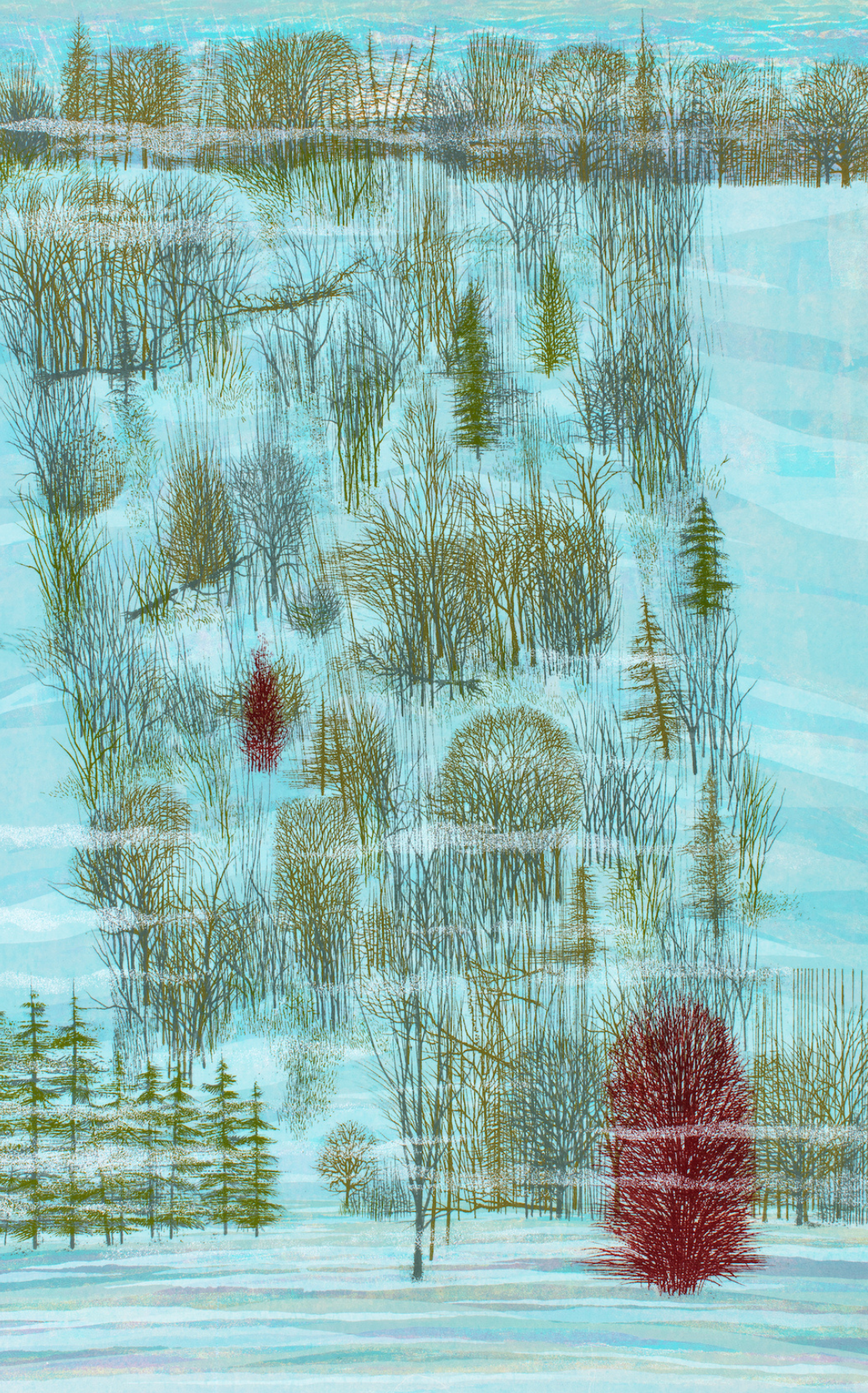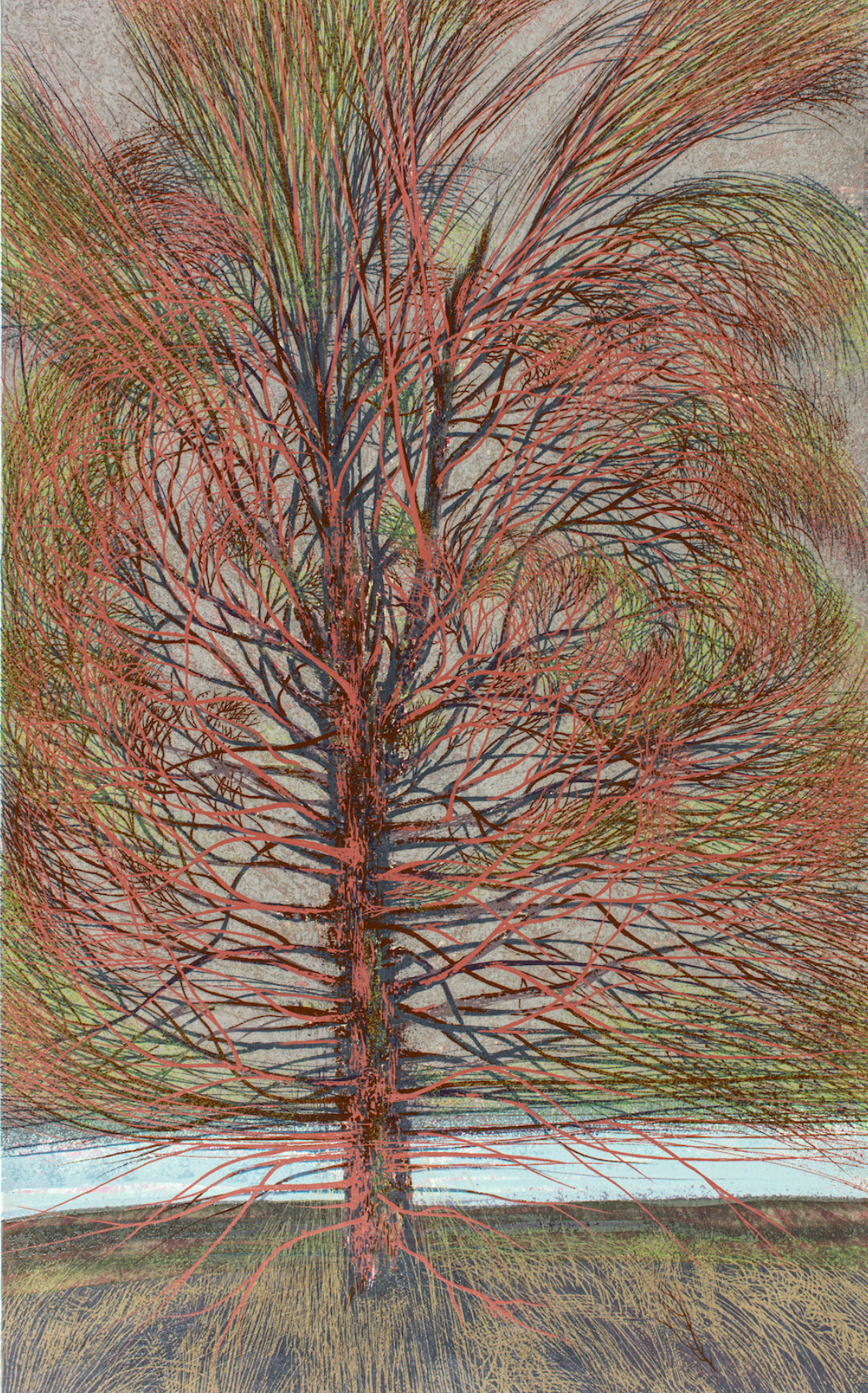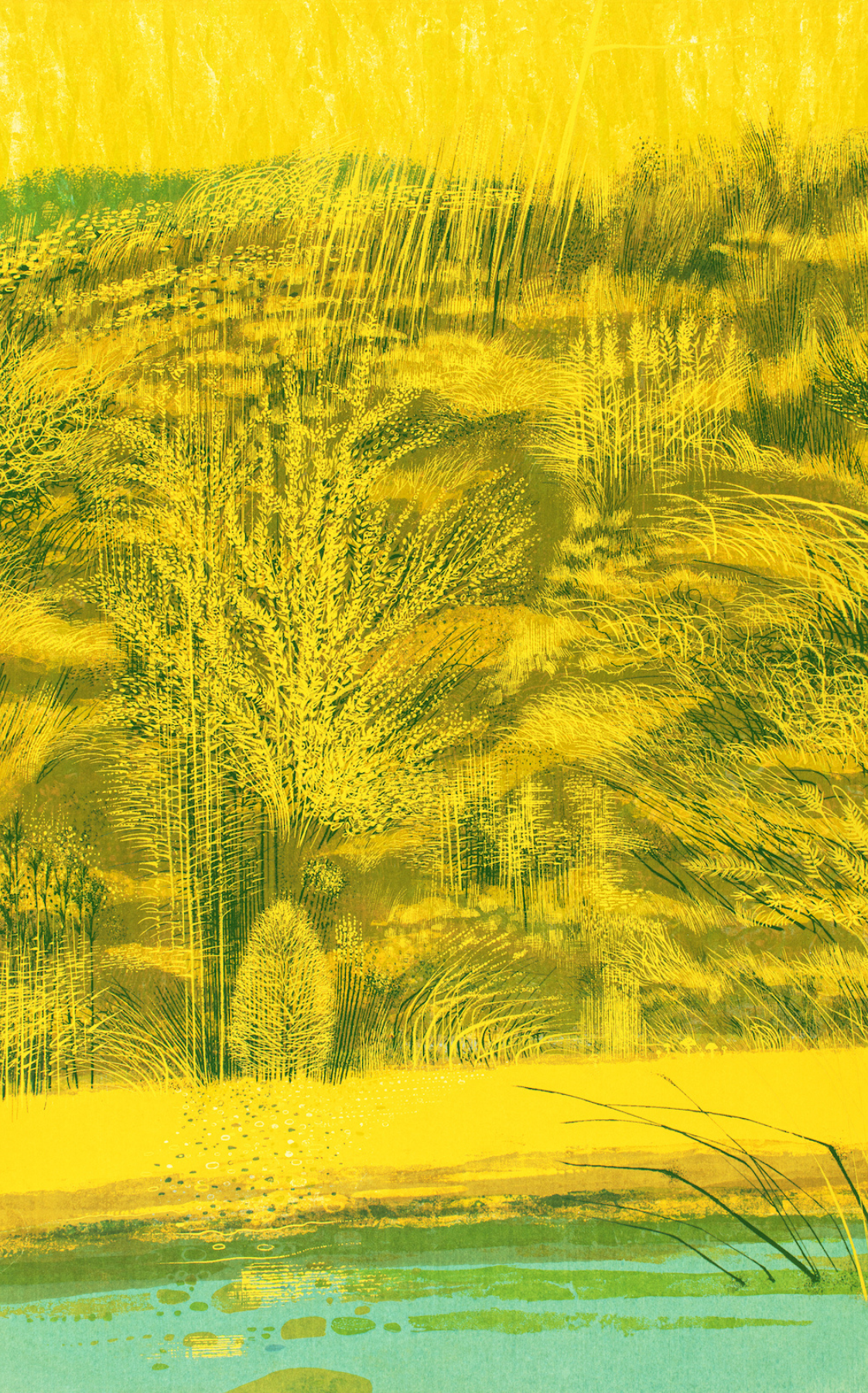Casein Paintings by Ruth Grotenrath
Three Grotenrath Casein paintings from RAM’s permanent collection are represented in the guest room baths at Hotel Verdant: Bowl of Apples (Interior with Fruit); Bulbs, Bowls; and Table and Chair.
Bowl of Apples (Interior with Fruit)
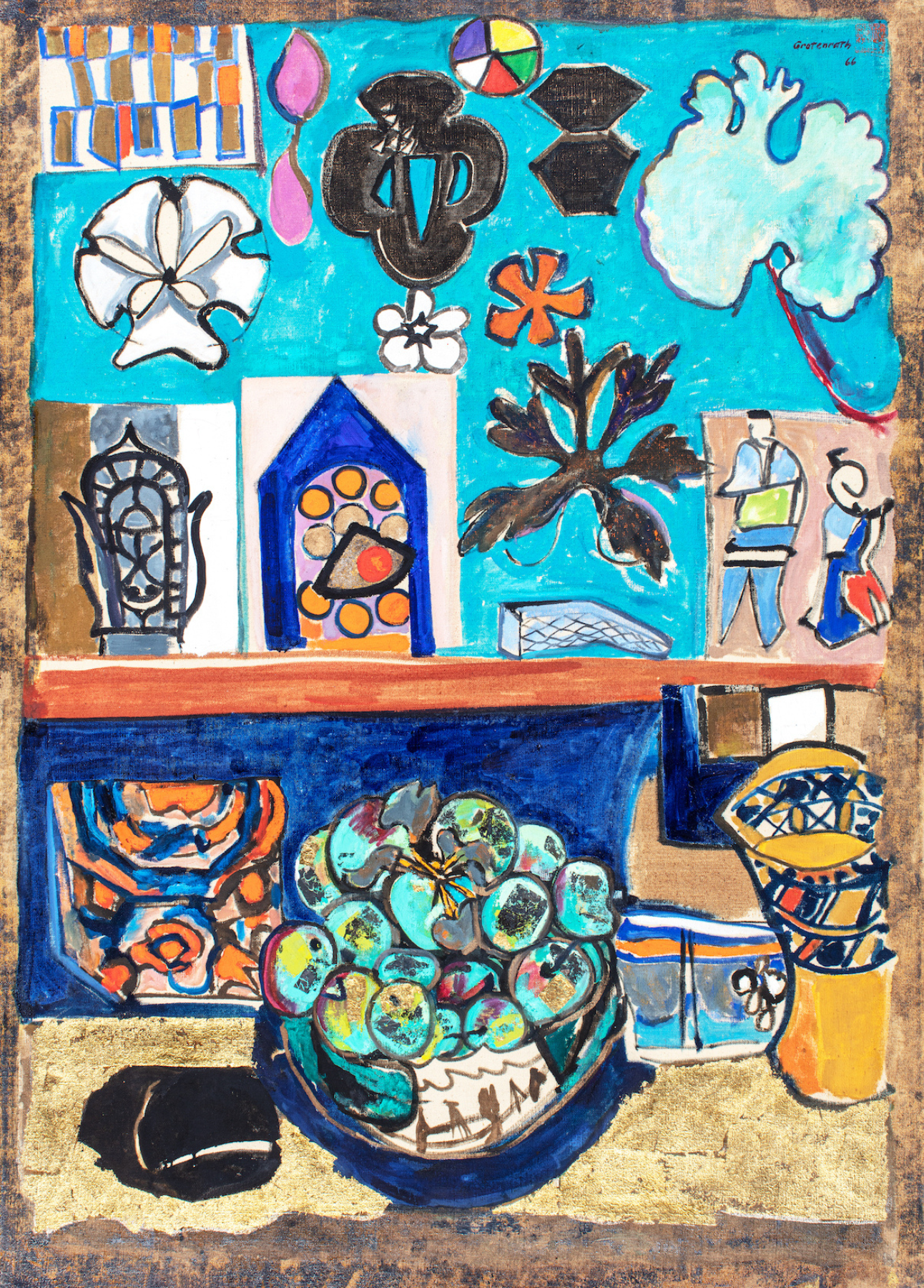
Ruth Grotenrath
Bowl of Apples (Interior with Fruit), 1966
Casein on canvas
42 x 30 inches
Racine Art Museum, Gift of The Schomer Lichtner Trust and the Kohler Foundation, Inc.
Photography: Jon Bolton
Table and Chair
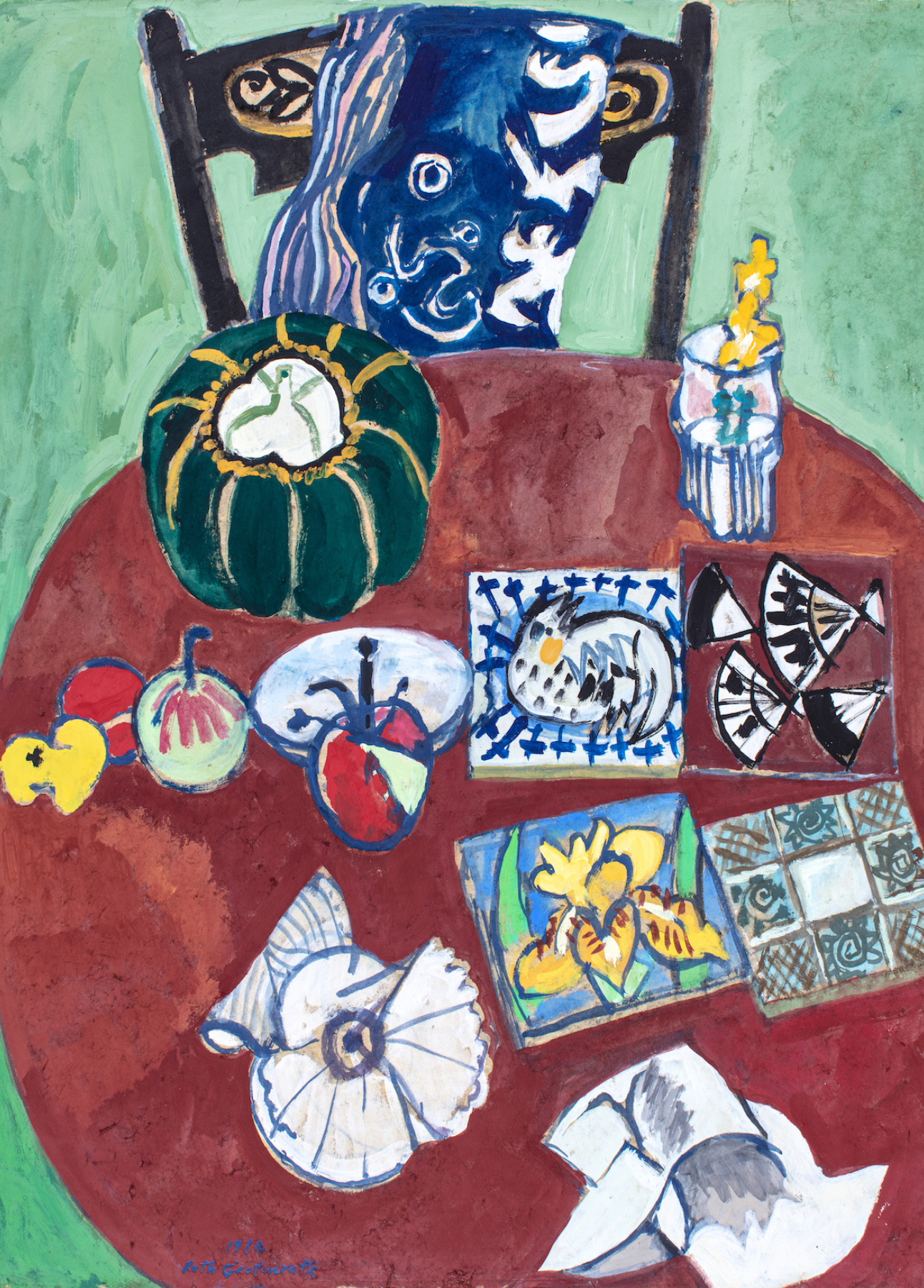
Ruth Grotenrath
Table and Chair, 1984
Casein on Japanese paper
25 x 19 inches
Racine Art Museum, Gift of The Schomer Lichtner Trust and the Kohler Foundation, Inc.
Photography: Jon Bolton
Bulbs, Bowls
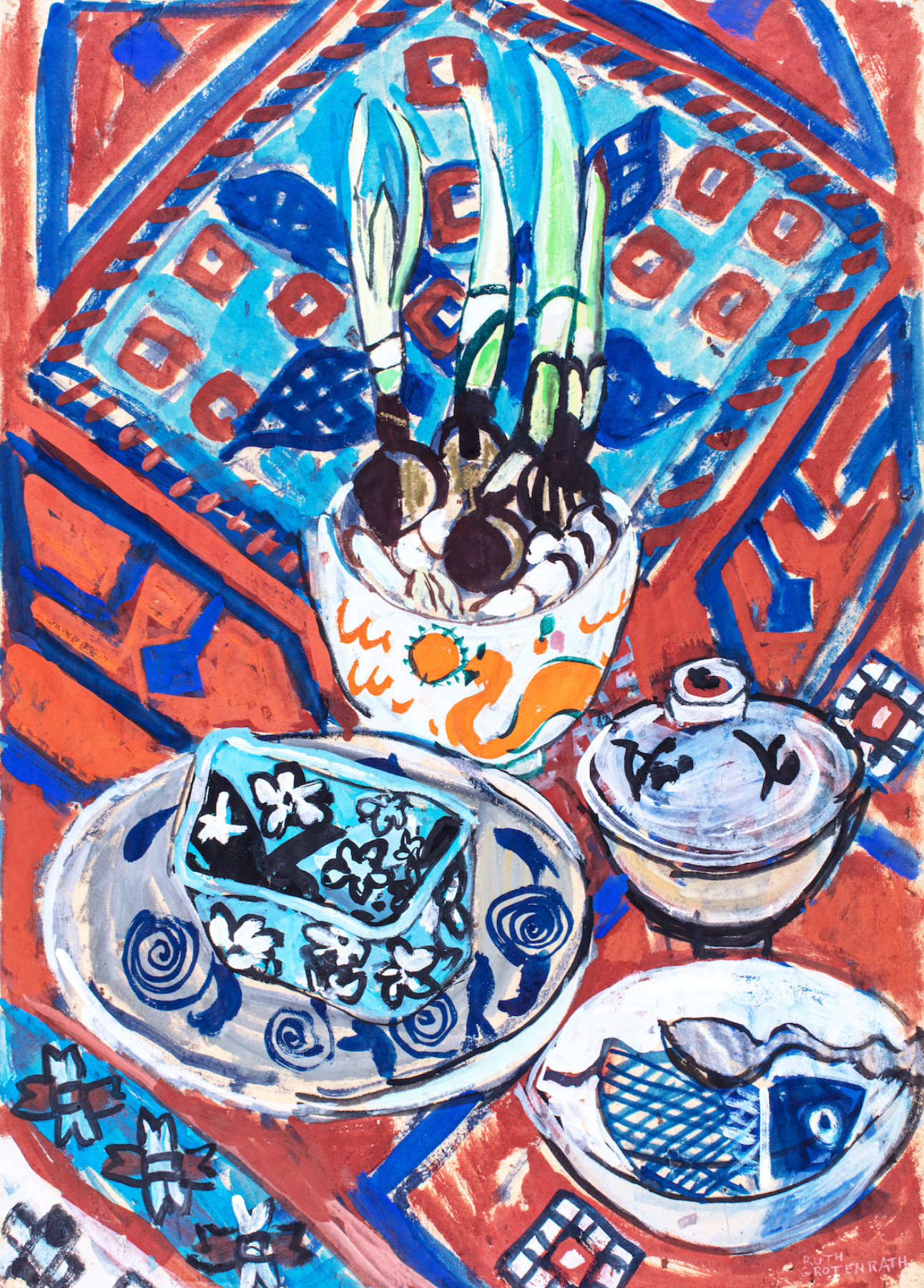
Ruth Grotenrath
Bulbs, Bowls, ca. 1975
Casein on paper
24 x 17 inches
Racine Art Museum, Gift of The Schomer Lichtner Trust and the Kohler Foundation, Inc.
Photography: Jon Bolton
Artist Biography
Ruth Grotenrath (1912-1988) developed an interest in art while attending Riverside High School in Milwaukee, Wisconsin, where she was born. She received her Bachelor of Arts degree at Milwaukee State Teachers College in 1933 where her instructors were Gustave Moeller, Robert von Neumann, and Elsa Ulbricht. In 1934, Grotenrath married Milwaukee artist, Schomer Lichtner. By 1935, both were employed by the WPA (Works Project Administration) and the Treasury Relief Art Project. During this time, she painted three post office murals in tempera: an untitled mural, circa 1937, in Wayzata, Minnesota; Boy Rounding up Stock, 1941, in Hart, Michigan; and Unloading a River Barge, 1943, in Hudson, Wisconsin. Grotenrath’s early work from the 1930s tended to be in the American Regionalist style with serious subjects and somber tones. Brighter colors began to appear in her work in the 1940s, when she turned to landscape and farm subjects that also interested Lichtner.
In 1945, Grotenrath was on the staff at the Layton School of Art where she taught still life painting. In the 1950s, she produced and sold her own designs of silkscreen printed drapery fabric at the Wisconsin State Fair and began to use water-based casein paint in her works. In 1961, she taught design at the University of Wisconsin–Milwaukee and at The Clearing in Door County. Significantly inspired by a trip to Japan, her later works, after 1960, are very colorful still lives using abstract elements that often reflect Asian art and culture. Grotenrath and Lichtner’s shared studio, home, and garden were decorated in ways that reflected their interest in Japanese art and culture. Many of her compositions documented their domestic environment. For many years, the Lichtners drove down from Milwaukee to teach art classes at Racine Art Museum’s Charles A. Wustum Museum of Fine Arts campus.
Milwaukee Journal Sentinel art critic, James Auer was quoted as saying: “Ruth Grotenrath was a woman who not only persisted, but prevailed in the largely male controlled art business of the 30s, 40s, and 50s.” In this sense, she was much like her mentor, Elsa Ulbricht. Grotenrath’s art seems to carry a theme of the celebration of sensual loveliness in life and the world. As an artist inspired by the Japanese aesthetic of Zen, she was receptive to the environment and aware of the moment.
Casein Paintings by Ruth Grotenrath
Three Grotenrath Casein paintings from RAM’s permanent collection are represented in the guest room baths at Hotel Verdant: Bowl of Apples (Interior with Fruit); Bulbs, Bowls; and Table and Chair.
Bowl of Apples (Interior with Fruit)

Ruth Grotenrath
Bowl of Apples (Interior with Fruit), 1966
Casein on canvas
42 x 30 inches
Racine Art Museum, Gift of The Schomer Lichtner Trust and the Kohler Foundation, Inc.
Photography: Jon Bolton
Table and Chair

Ruth Grotenrath
Table and Chair, 1984
Casein on Japanese paper
25 x 19 inches
Racine Art Museum, Gift of The Schomer Lichtner Trust and the Kohler Foundation, Inc.
Photography: Jon Bolton
Bulbs, Bowls

Ruth Grotenrath
Bulbs, Bowls, ca. 1975
Casein on paper
24 x 17 inches
Racine Art Museum, Gift of The Schomer Lichtner Trust and the Kohler Foundation, Inc.
Photography: Jon Bolton
Artist Biography
Ruth Grotenrath (1912-1988) developed an interest in art while attending Riverside High School in Milwaukee, Wisconsin, where she was born. She received her Bachelor of Arts degree at Milwaukee State Teachers College in 1933 where her instructors were Gustave Moeller, Robert von Neumann, and Elsa Ulbricht. In 1934, Grotenrath married Milwaukee artist, Schomer Lichtner. By 1935, both were employed by the WPA (Works Project Administration) and the Treasury Relief Art Project. During this time, she painted three post office murals in tempera: an untitled mural, circa 1937, in Wayzata, Minnesota; Boy Rounding up Stock, 1941, in Hart, Michigan; and Unloading a River Barge, 1943, in Hudson, Wisconsin. Grotenrath’s early work from the 1930s tended to be in the American Regionalist style with serious subjects and somber tones. Brighter colors began to appear in her work in the 1940s, when she turned to landscape and farm subjects that also interested Lichtner.
In 1945, Grotenrath was on the staff at the Layton School of Art where she taught still life painting. In the 1950s, she produced and sold her own designs of silkscreen printed drapery fabric at the Wisconsin State Fair and began to use water-based casein paint in her works. In 1961, she taught design at the University of Wisconsin–Milwaukee and at The Clearing in Door County. Significantly inspired by a trip to Japan, her later works, after 1960, are very colorful still lives using abstract elements that often reflect Asian art and culture. Grotenrath and Lichtner’s shared studio, home, and garden were decorated in ways that reflected their interest in Japanese art and culture. Many of her compositions documented their domestic environment. For many years, the Lichtners drove down from Milwaukee to teach art classes at Racine Art Museum’s Charles A. Wustum Museum of Fine Arts campus.
Milwaukee Journal Sentinel art critic, James Auer was quoted as saying: “Ruth Grotenrath was a woman who not only persisted, but prevailed in the largely male controlled art business of the 30s, 40s, and 50s.” In this sense, she was much like her mentor, Elsa Ulbricht. Grotenrath’s art seems to carry a theme of the celebration of sensual loveliness in life and the world. As an artist inspired by the Japanese aesthetic of Zen, she was receptive to the environment and aware of the moment.
Stay in Touch
The Racine Art Museum and RAM’s Wustum Museum work together to serve as a community resource, with spaces for discovery, creation, and connection. Keep up to date on everything happening at both museum campuses—and beyond—by subscribing to our email newsletter:


